Team excursion to hacienda verde
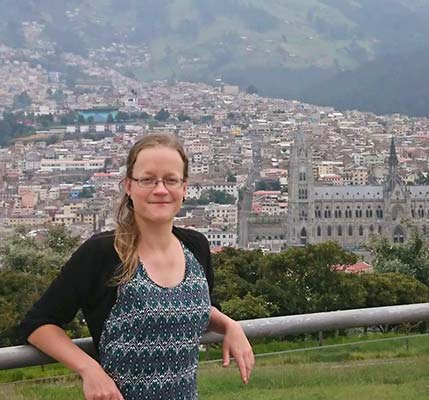
Maria S.
Arriving to Hacienda Verde
On Saturday two weeks ago, the Quito office team went on a trip to Hacienda Verde near Guayllabamba.
We left early Quito in the morning, headed towards Otavalo and turned left after the bridge over the river Pisque, following the path to the protected area Parque Jerusalem. The entrance to the hacienda is situated about 10 minutes drive after the turn off to Parque Jerusalem. The area we drove through is characterized by typical dry forest vegetation with agaves, opuntias and various thorny shrubs.
Finally, we reached the entrance where Lucia, the owner, and six excited but friendly dogs welcomed us. First, she led us through the avocado museum, one of the hacienda’s main attractions.
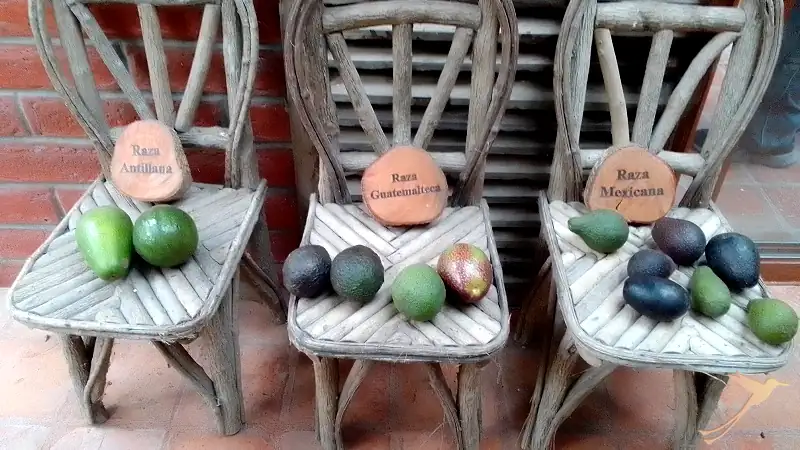
The miracle fruit avocado
It was interesting to learn the details about the plant’s origin (Mexico), its distribution and its many uses. The avocado is a true miracle plant: not only is it rich in unsaturated fat and a good source of vitamin K, folic acid and potassium. The pulp of the fruit and the shampoos and creams derived from it strengthen hair growth and are said to prevent wrinkles. The wood of the avocado tree is good for constructing furniture, and the bark is said to help with toothaches and have disinfectant properties. Teas and hot baths made from the leaves are thought to help with epilepsy, colds, tuberculosis and diarrhea. The juice from the seeds is a natural dye.
In the small showroom, various products such as avocado oil or skin creams can be bought.
An oasis in the middle of the dry forest
We left the museum and Lucia first led us through a part of the hacienda with various fruit trees as well as coffee plants. She and her husband Fabian have been practicing agroforestry here for over 15 years. The diversity of species is amazing, considering that we are actually in the middle of a dry forest region.
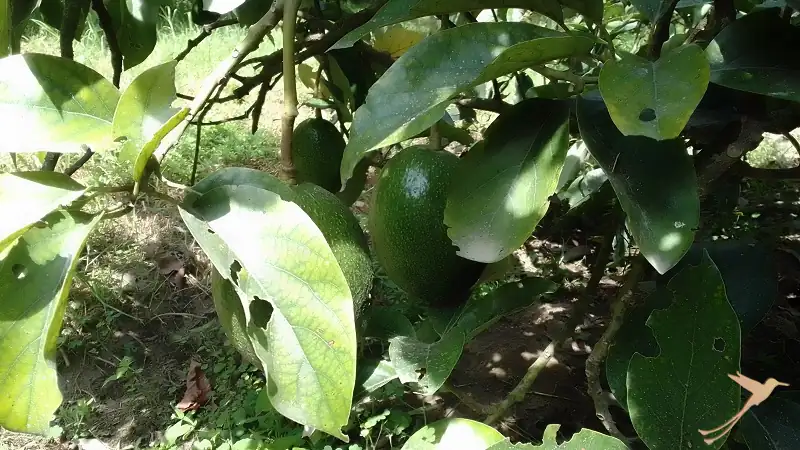
There grow also species that are more commonly found in coastal areas, such as Chirimoya and bananas. Furthermore, we were able to marvel at Andean papaya, various citrus trees, chayote and many avocado species, including both native and introduced. In between, the typical dry forest vegetation became visible from time to time, such as aloe vera plants and agaves with their impressive meter-high inflorescences. Lucia has a doctorate in ethnobotany and was able to tell us many, sometimes astonishing details about the different plants and their uses.
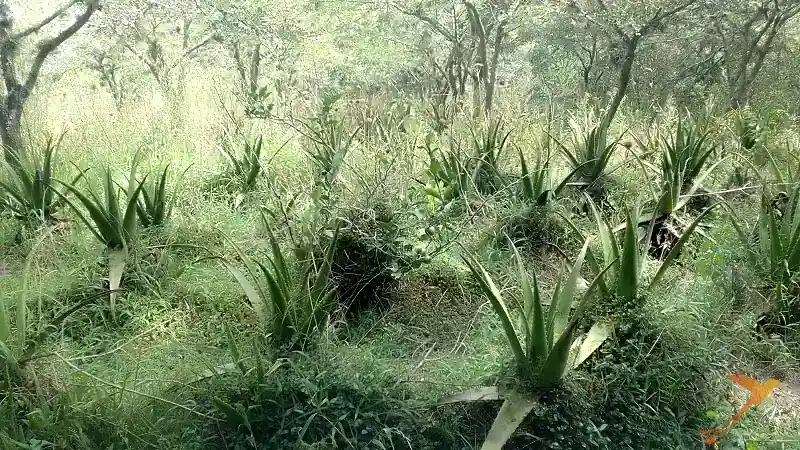
Soon we reached some buildings where Fabian was already waiting for us and there was the biggest agave I had ever seen.
Fabian explained and showed us how he makes compost and natural fertilizer. Due to his long experience as a nature guide, his explanations were very clear and interesting. Next to the building grow some cotton plants, which just blossomed and impressed us very much.
The tour continued through the huge property, through avocado plantations, past more citrus trees until we finally reached Fabian’s apiary. The bees are very important for pollinating the fruit trees.
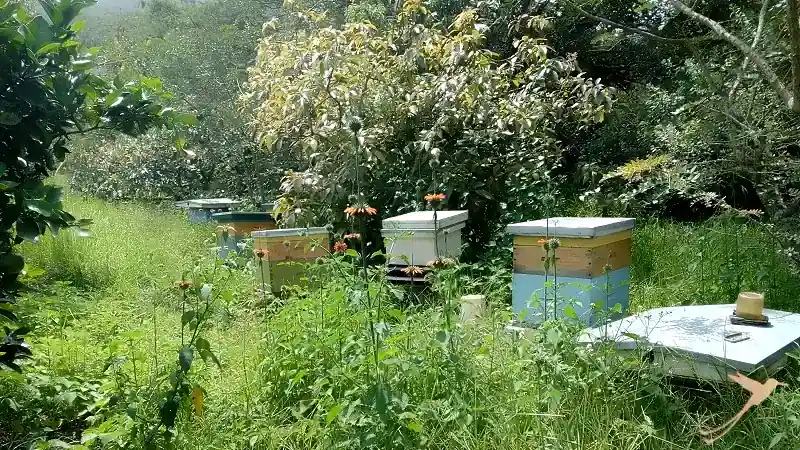
After a while we came to a mystical part of the forest where the trees were covered with bright moss and bromeliads. Behind it was the viewpoint over the valley of the Guayllabamba River. The view was impressive.
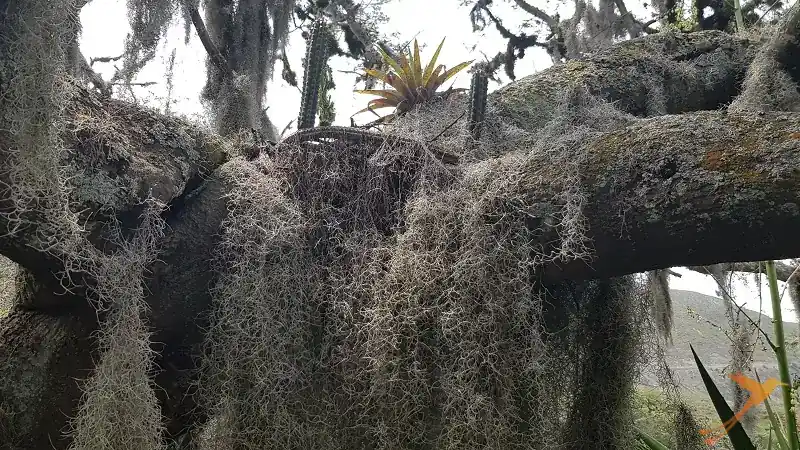
Fruit tasting on the equator
We walked a few minutes further and arrived at a small monument that marks the equator line. The place is important both energetically and culturally.
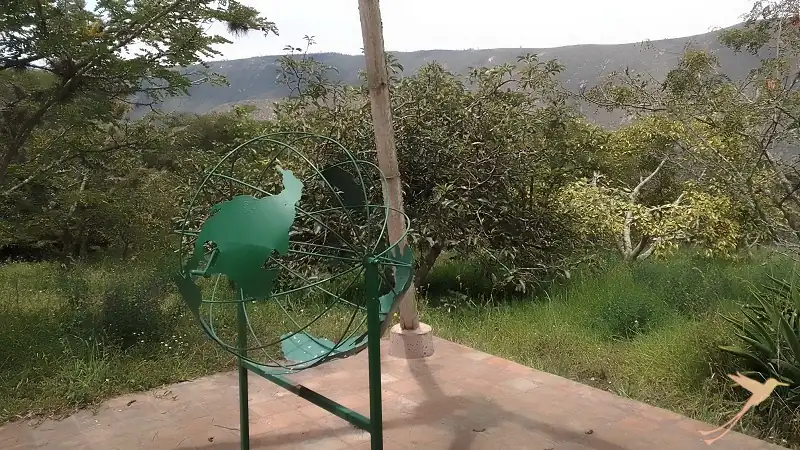
For us it was particularly interesting at that moment, because Lucia was already waiting for us with a fruit basket. We had the opportunity to taste various citrus fruits, as well as tree tomato, pepino, chirimoya and guava, freshly harvested, sun-ripened and free of chemicals. We were all delighted and continued on our way with renewed energy.
Plantations, primary and secondary forest
The following short hike led through very varied vegetation. First, we passed through an area where mainly cacti grew, namely opuntias, which we knew so far from Galapagos. These are home to interesting inhabitants: the cochinille aphids. In the past, the red dye carmine was extracted from the females of these insects, but now it is produced industrially. Fabian, Dayana and Lorena tried out the lipstick suitability of the color – it worked.
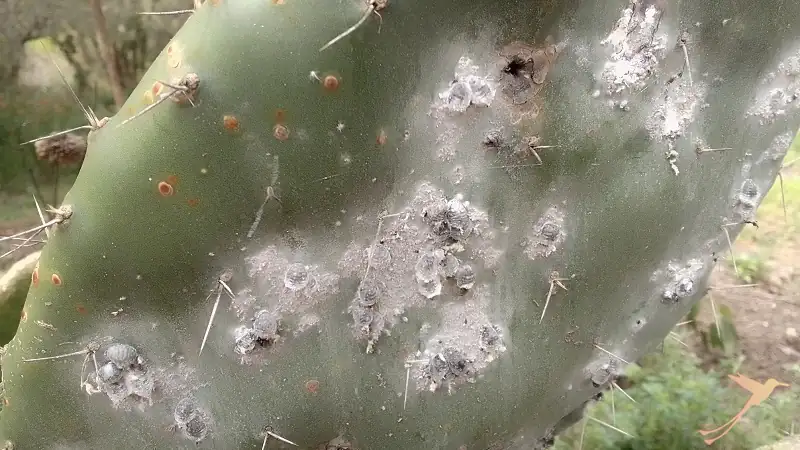
We walked on, past citrus orchards and through relatively dense forest that provided soothing shade. Later, we passed through another exciting part which, as Fabian explained to us, consisted mainly of primary forest with many rocks and stones scattered around, probably the result of volcanic activity in the area many years ago.
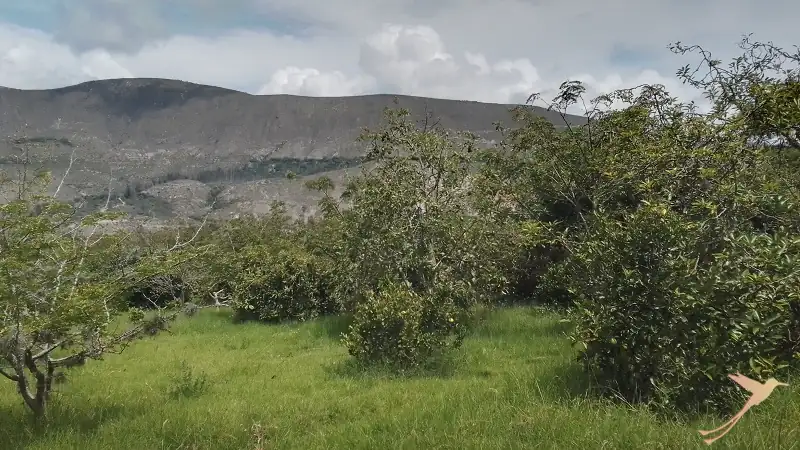
Avocado tasting and more - the grand finale
After walking for about two hours, we reached the main house area. At an artificial lagoon surrounded by trees, a table was already richly set for us. Overlooking the water, we sampled different types of avocado along with chochos (Andean lupine), porotón – a giant bean that grows on trees -, homemade ají, fermented chayote, and roasted seeds of sambo (fig leaf squash). For thirst, there was lemongrass lemonade as well as two types of fermented agave drinks, one non-alcoholic, the other with a little alcohol.
We had originally planned to have lunch after the excursion – this was definitely not necessary after this surprising feast. Full and satisfied, we started on our way home.
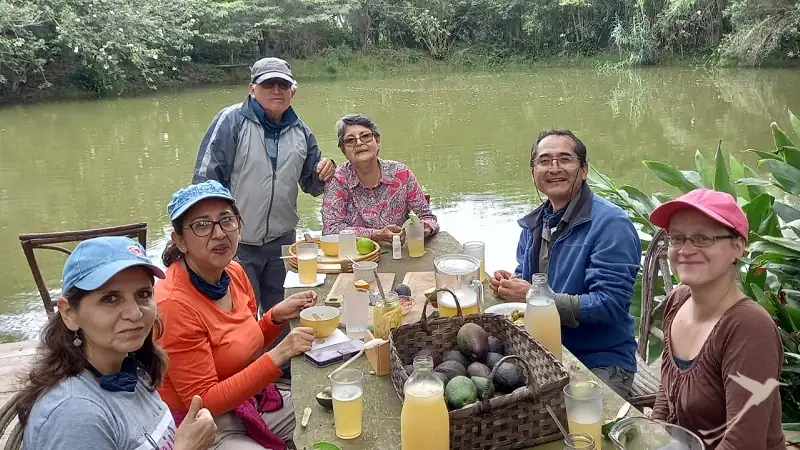
Our personal highlights
Without a doubt, we all enjoyed the trip very much, but everyone found his/her personal highlight, which we have summed up here:
Diego:
My personal highlight when I visited the Hacienda Verde was to know new fruits and vegetables such as: Poroton and the plant of Guarango. But of course, the best part for me was to test them at the artificial lagoon, with the other seeds accompanied by Chochos.
The process of “bio-fertilizers” also was very interesting. In fact, there is a place to gain new knowledge. In one word: “Fantastic or Great day in the nature.
Dayana:
In my opinion, Hacienda Verde is a miracle: in the middle of an extremely dry place, a great variety of fruits that have disappeared in the market are produced. Tasting for the first time several types of avocados, lemons, legumes and beverages from the penco have been a great delight. Something outstanding at the Hacienda is the crop rotation, in order to have a healthier soil and better weed control without herbicides and chemicals. The owners of the Hacienda produce their own fertilizer with agro-ecological practices, contributing to a better economic growth and a more specialized protection of the environment as a factor that will be highly valued by visitors.
For SOLEQ, this is the beginning of the promotion of a new attraction in terms of agrotourism. Our tourists will have the chance to experience a place very close to Quito, that maintains environmentally sustainable agricultural practices, that promotes respect for natural and cultural heritage, that encourages the revaluation of practices, customs and traditional knowledge of the countryside, proposing a new sustainable dimension of agricultural culture whose importance should revive and prevail.
Lorena:
What I liked most about the visit at The Hacienda Verde was to find out that in this dry climate a wide variety of fruits and vegetables grown here, at the same time to learn about the history and use of avocado at the Museum located closed to the main path, to know about the new vegetables such as: The Poroton, which is a tree and its looks like beans when you cook it, The Cidra and The Chayote.
For me, the highlight was eating these delicious foods of the countryside in front of an artificial lagoon, it was totally wonderful.
Maria:
Besides the tasting of the delicious fruits, varieties of avocados and drinks from the agave, I liked most the moss hanging from the trees. After walking through different parts of the property, we reached a viewpoint surrounded by those trees that were allover covered by the almost white and very soft-looking moss. It was a mystic experience, and I almost expected a dwarf to pop out of the thicket.
What should you take with you when visiting Haciende Verde?
If you want to visit Hacienda Verde, which you should definitely do, there are a few things you should keep in mind:
The Hacienda is located in the dry forest region at about 2000 meters above sea level, which means that when the sun is shining, it can get quite warm and you can easily get sunburn. So you should bring sunscreen, a hat or cap and enough water. Long pants and sturdy, comfortable shoes are recommended, because you often walk through sometimes scratchy undergrowth.
In any case, you should have insect repellent with you and apply it regularly, because the mosquitoes are quite aggressive. Otherwise there are no dangerous animals or insects.
A visit to the hacienda is ideal for nature lovers, hikers, ornithologically and (ethno)botanically interested and all curious travelers.
visit our other channels
Recent Posts
- From Manglaralto to Pacoche and surroundings April 18, 2024
- Excursions within the rainforest region of Ecuador April 5, 2024
- Ecuador in a state of emergency?! My personal experience March 22, 2024
- The 10 most beautiful lakes and lagoons in Ecuador – Part 2 March 12, 2024
- The 10 most beautiful lakes and lagoons in Ecuador – Part 1 February 23, 2024